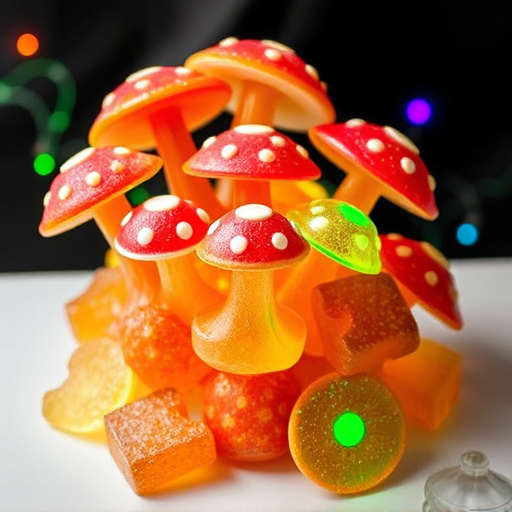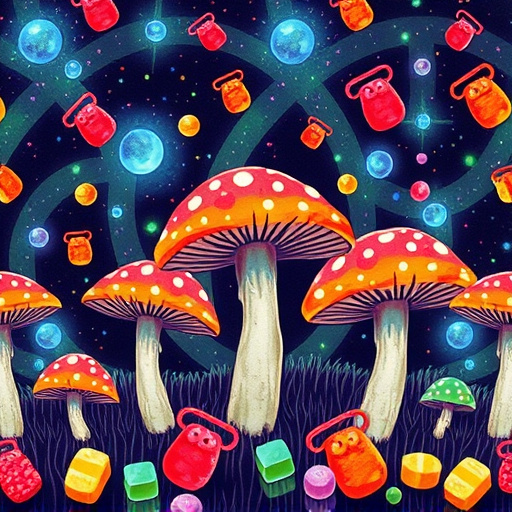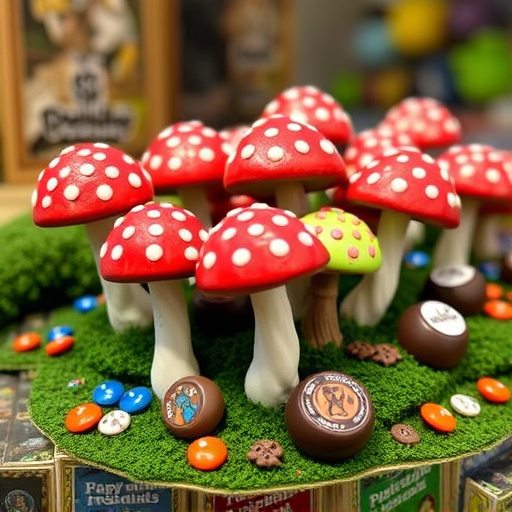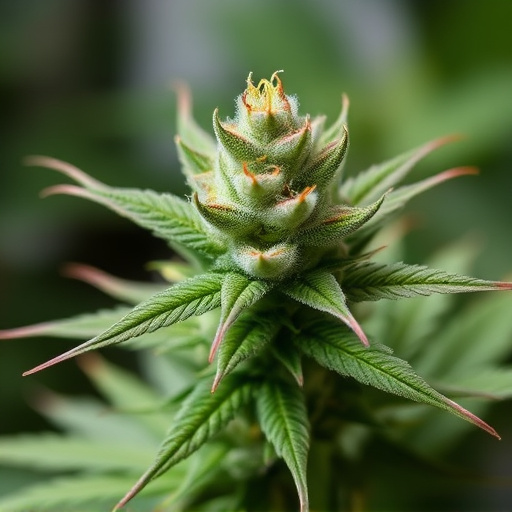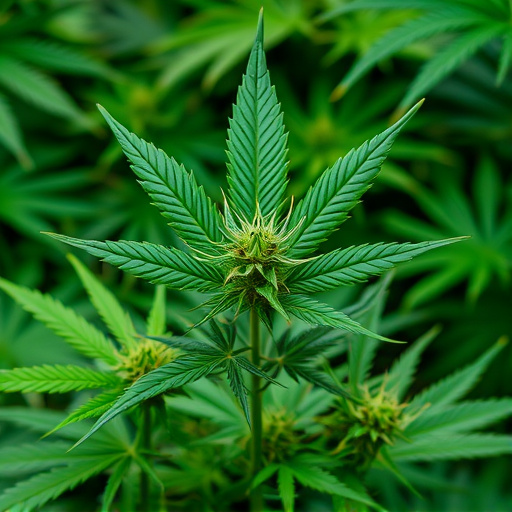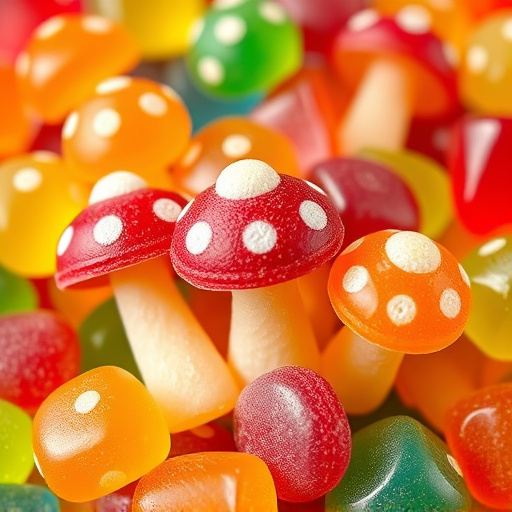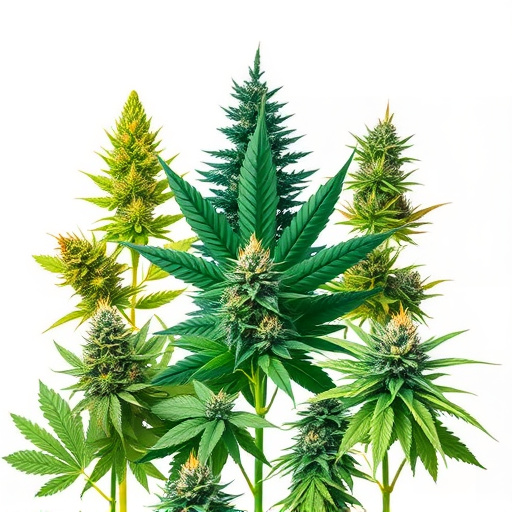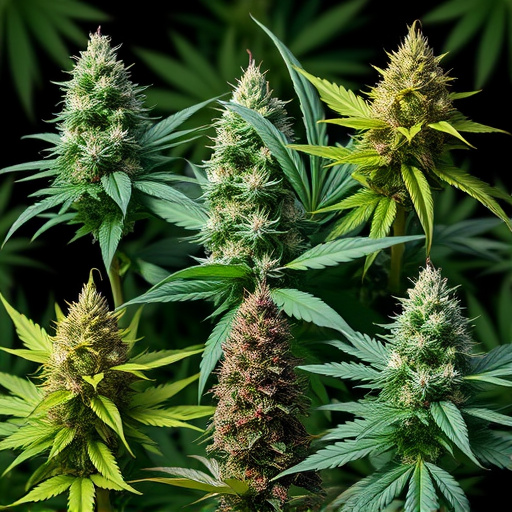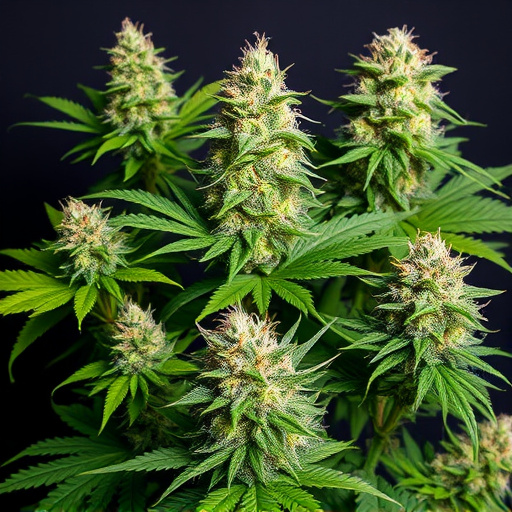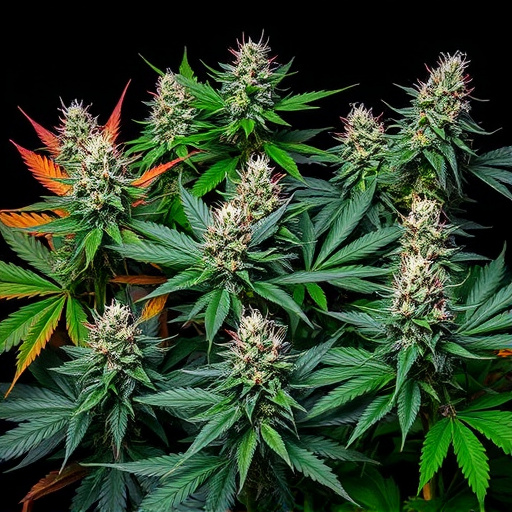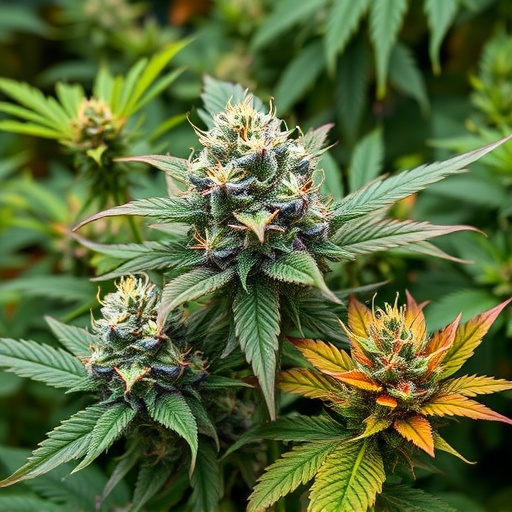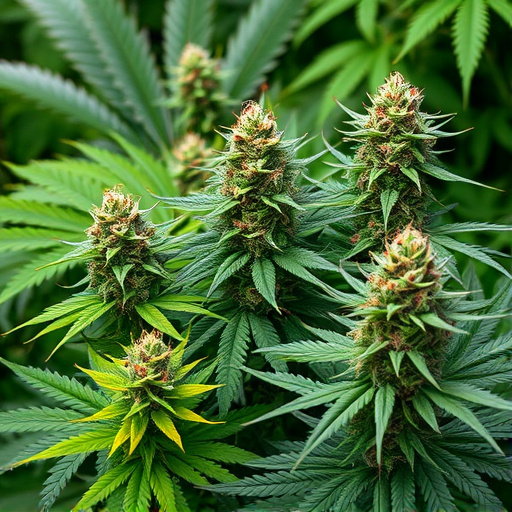The colors of cannabis flowers aren't just cosmetic—they're a direct reflection of the plant's complex chemistry, including cannabinoids like THC and CBD, and terpenes like myrcene and linalool. These chemical components not only create diverse hues but also impact aroma, flavor, and potential therapeutic benefits. Environmental factors like climate and soil conditions further influence these compounds, leading to varied colors among different cannabis strains. Understanding these connections allows cultivators to optimize growing conditions for desired characteristics. Each strain exhibits unique color shifts as it matures, driven by biochemical processes; deep greens to purples, pinks, or blues are all genetically and environmentally influenced. Cultivators carefully breed plants for specific color profiles, resulting in visually stunning hybrids that tell unique stories through their color palettes.
Cannabis flowers captivate with their vibrant hues, ranging from deep blues to vivid purples and fiery oranges. But why do these colors vary? This article delves into the fascinating world of cannabis pigmentation, exploring the interplay between science, environment, and genetics. We uncover how chemical composition, climate, and soil conditions influence flower colors, shedding light on the unique characteristics found in different cannabis strains.
- The Science Behind Cannabis Pigmentation: Understanding the Chemical Composition
- Environmental Factors: How Climate and Soil Conditions Impact Flower Colors
- Strain-Specific Characteristics: Exploring the Unique Color Palettes in Different Cannabis Strains
The Science Behind Cannabis Pigmentation: Understanding the Chemical Composition
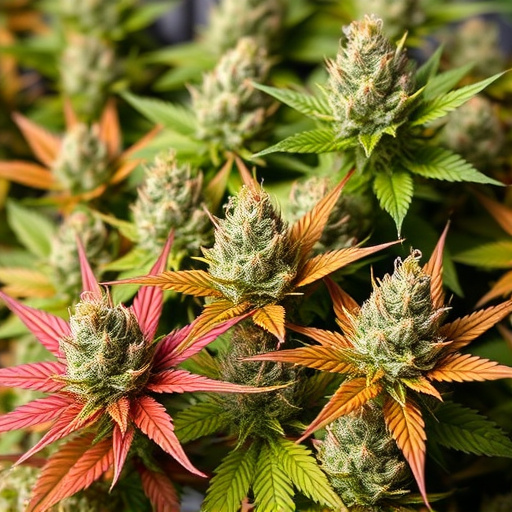
The color of cannabis flowers isn’t merely aesthetic; it’s a result of complex chemical interactions within the plant itself. The science behind cannabis pigmentation is fascinating, revealing how different compounds and terpenes contribute to the diverse hues found in various strains. Each cannabis strain boasts a unique combination of cannabinoids, including THC and CBD, and terpene profiles, which play a significant role in determining its final color.
These chemical components not only influence the visual appeal but also impact the plant’s aroma, flavor, and potential therapeutic effects. For instance, certain terpenes like myrcene and linalool, known for their earthy and floral notes, can enhance the overall experience by adding depth to both scent and taste. Understanding the intricate relationship between these chemical components is key to appreciating the unique characteristics of different cannabis strains and their corresponding colors.
Environmental Factors: How Climate and Soil Conditions Impact Flower Colors
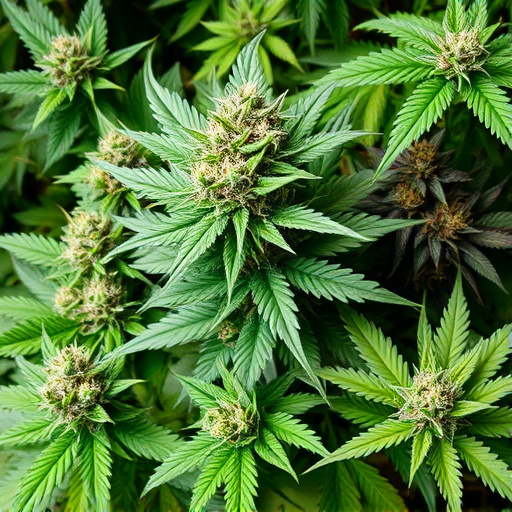
The color of cannabis flowers isn’t merely a cosmetic trait; it offers valuable insights into the plant’s health and quality, especially when considering the distinct characteristics of different cannabis strains. Environmental factors play a pivotal role in this transformation. Climate and soil conditions significantly influence the vibrant palette of cannabis flowers. For instance, variations in temperature and sunlight exposure can prompt the plant to produce higher levels of specific cannabinoids and terpenes, which are responsible for the unique colors and aromas we associate with different strains.
Soil composition is another critical aspect; nutrient-rich soils often foster healthier plants with more intense colors. Different cannabis strains have evolved to adapt to these varying environments, leading to a diverse range of floral hues. Understanding these connections allows cultivators to optimize growing conditions, ensuring that the final product meets the desired aesthetic and therapeutic standards.
Strain-Specific Characteristics: Exploring the Unique Color Palettes in Different Cannabis Strains
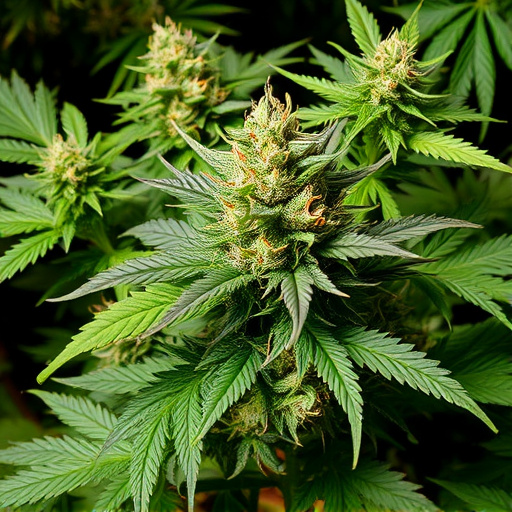
The beauty of cannabis flowers extends beyond their aroma and potency; it also lies in their captivating color transformations as they mature. Each strain boasts a unique color palette, offering a visually stunning spectacle for cultivators and enthusiasts alike. These variations are not merely aesthetic; they are the result of intricate biochemical processes within the plant. Cannabinoids and terpenes, the compounds responsible for cannabis’s therapeutic effects and distinct aromas, play a pivotal role in determining these colors. For instance, strains known for their vibrant hues often contain higher levels of beta-caryophyllene (BCP) and myrcene, which not only contribute to enticing scents but also influence the plant’s pigmentation.
Exploring different cannabis strains reveals a diverse range of color expressions. Some strains develop rich, deep greens, while others showcase subtle blends of purple, pink, or even blue hues. These strain-specific characteristics are influenced by various factors, including genetic predispositions, growing conditions, and environmental cues. Cultivators often meticulously select and breed plants based on their desired color profiles, creating hybrid varieties that captivate the senses with their unique visual appeal. The world of cannabis is a vibrant tapestry woven with countless variations, where each strain tells a story through its distinctive color palette.
The captivating color transformation of cannabis flowers is a multifaceted phenomenon, influenced by a complex interplay of scientific, environmental, and strain-specific factors. By delving into these aspects, we’ve explored how chemical composition, climate, and genetic variations contribute to the diverse and beautiful color palettes found in different cannabis strains. Understanding these nuances not only enhances our appreciation for this remarkable plant but also aids cultivators in crafting unique experiences tailored to various preferences.
